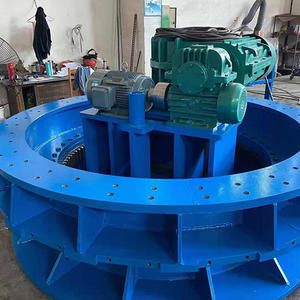What are the ingot casting technologies of the ingot casting machine? Ingots are made by pouring molten metal into permanent or reusable molds. After solidification, these ingots (or bars, slabs or billets, depending on the container) are further machined into a variety of new shapes. Ingot casting includes a series of procedures from the steelmaking furnace tapping (or the end of the out-of-furnace refining) to the stripping of the ingot to the soaking furnace of the blooming mill, that is, preparation before pouring, pouring, demoulding, ingot finishing or hot delivery Wait. Ingots make up a large portion of the entire metal casting and are divided into 3 categories: static ingots, semi-continuous or direct-cooled ingots, and continuous ingots.

The ingot casting technology of the ingot casting machine is divided into the following three types:
1. Static ingot casting technology
Static ingot casting is simply pouring molten metal into a mold to solidify and then pulling the ingot out of the mold so that the mold can be reused.
2. Semi-continuous ingot casting technology
The semi-continuous ingot casting process is used to make most of the cast alloys in the aluminum industry, from which shapes such as bars, sheets, laths, plates, etc. are machined. During this process, molten aluminum is transferred into a water-cooled mold, and a movable base is attached to the mold's long piston. After further solidification of the mold surface to form a hard "skin", the piston moves down and more metal is continuously filled into the container. Then, the piston moves to its full length and the process stops. The conventional approach in the aluminum industry is to use properly lubricated metal molds. Process improvements, however, have allowed major aluminum alloy producers to replace (at least partially) metal molds with electromagnetic fields that allow the molten metal to contact the metal mold for short periods of time, so products with a higher finish can be produced than conventional methods.
3. Continuous ingot casting technology
Continuous ingot casting provides the main casting material resource for the steel and copper industries, and is developing rapidly in the aluminum industry. During this process, molten metal is fed into a mold, which is very similar to semi-continuous casting in the beginning. But the process does not stop after a certain period of time, and the solidified ingot is continuously cut or cut to a certain length and transported away during the casting process. Thus, the process is continuous and the solidified bar or slab is transported away as quickly as it is cast. This method has many economic advantages over traditional casting processes.
Lufeng factory specializes in the production of various smelting equipment and complete sets of equipment, including: Ingot Casting Machine, Melting Furnace, High temperature metal transfer pump, Electrolytic system and other smelting technology equipment. These products are sold to dozens of domestic and foreign customers.
 English
English  Español
Español  Português
Português  русский
русский  français
français  日本語
日本語  Deutsch
Deutsch  Tiếng Việt
Tiếng Việt  Italiano
Italiano  Nederlands
Nederlands  ไทย
ไทย  Polski
Polski  한국어
한국어  Svenska
Svenska  Malay
Malay  বাংলা
বাংলা  हिन्दी
हिन्दी  Pilipino
Pilipino  Türk
Türk  عربى
عربى  Indonesia
Indonesia  norsk
norsk  čeština
čeština  Українська
Українська  Javanese
Javanese  فارسی
فارسی  తెలుగు
తెలుగు  Burmese
Burmese  български
български  Latine
Latine  Azərbaycan
Azərbaycan  Српски
Српски  Esperanto
Esperanto  Afrikaans
Afrikaans  Català
Català  Cymraeg
Cymraeg  Беларус
Беларус  Hrvatski
Hrvatski  Kreyòl ayisyen
Kreyòl ayisyen  Shqiptar
Shqiptar  Bosanski
Bosanski  Кыргыз тили
Кыргыз тили  ಕನ್ನಡ
ಕನ್ನಡ  IsiXhosa
IsiXhosa  Chichewa
Chichewa  Somali
Somali  O'zbek
O'zbek  հայերեն
հայերեն  Sundanese
Sundanese  Malagasy
Malagasy 






